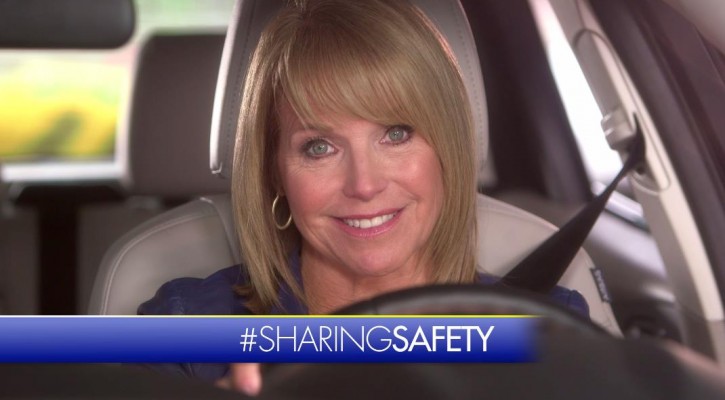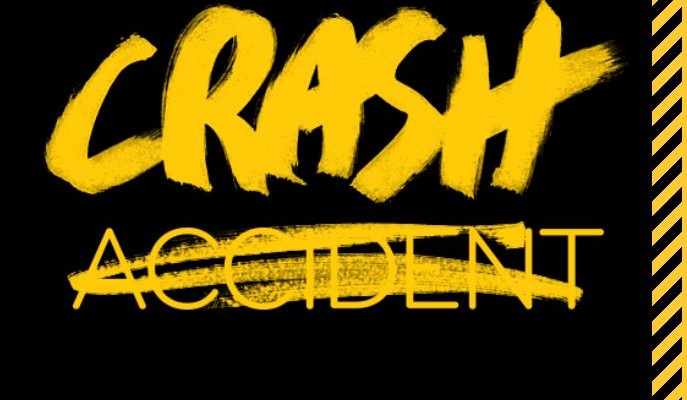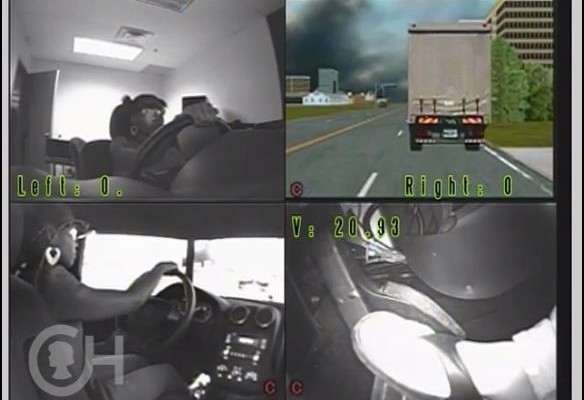Category Archive: Driving Skills

The Deadliest Period For Teen Drivers
June 8, 2016
The recent Memorial Day weekend began the deadliest period of the year for teen drivers. Known as the “deadliest 100 days,” the period between Memorial Day and Labor Day has, for many years, seen a significant rise in the deaths of teen drivers and their passengers.
The fatality increase during the summer months is due to several factors:
- Teens are out of school with extra time on their hands.
- Teens are bored and looking for excitement.
- Teens often fail to pace themselves – spending all day doing physically taxing activities at the beach and then going out late into the night.
- Alcohol or other drugs are often a part of the summer activities.
One might think that inexperience behind-the-wheel would also play a major role in the summer death rate and it does to an extent however, teens with the least experience have a much lower death rate than teens that have been driving a few years. Among Florida teen drivers aged 15 through 20 killed in 2014, drivers aged 15 through 17 made up only 12 percent of the teen deaths. Teen drivers aged 18, 19, and 20 accounted for 88 percent of the teen deaths during the deadliest period.
The death rate among older teens may be due to the fact that the older teens, after getting over the initial fear of solo driving become less cautious and more complacent. Another reason is that restrictions imposed on younger drivers by Graduated Driving Laws (GDL) are generally lifted by age 18 and teens who exercised caution during their probationary driving periods have now thrown caution to the wind.
Another issue that adds to the deadliest period is that of driver distractions. When discussing driver distractions, most automatically think of cell phones and texting. Those are serious and dangerous distractions but, surprisingly, they aren’t the distractions that contribute to most teen crashes. The AAA Foundation for Traffic Safety recently published the results of a study that used video cameras to follow 1,691 teen drivers for five years. During that period, the study subjects experienced a total of 538 crashes. While distractions by cell phones led to 12 percent of the crashes, distractions by talking to and interacting with teen passengers led to 15 percent of the crashes.
Teen passengers are a major distraction for teen drivers and that’s why many states restrict the number of passengers a teen driver can carry under their GDL laws. The lifting of both cell phone and passenger restrictions at age 18 is probably a major factor for the deaths among older teens during the deadliest period.
No matter what state law may say, parents can still impose their own driving restrictions on teens. Parents can limit the number of passengers to reduce distractions and they can ban the use of cell phones while driving. Parents who set the example by limiting their own use of cell phones and other distracting behaviors while driving stand the best chance of getting their teens to obey the rules.

Where Is Road Rage The Worst?
May 19, 2016
A new survey has come out listing those states and cities with the worst instances of road rage. This study, using some different methodology has some surprising results compared to studies in the past.
Past studies we have written about were sponsored by AutoVantage, an online insurance company. To conduct those studies, AutoVantage conducted phone interviews with 2500 drivers in 25 major metropolitan areas. The latest study, conducted by AutoInsuranceCenter, another online insurance company, looked at 65,535 Instagram posts that were hashtagged #RoadRage. The results of this study showed where and when the greatest number of road rage incidents were happening.
According to the Instagram posts, the greatest number of road rage incidents occurred:
- During the month of August.
- On Fridays.
- During the hours of 5:00pm and 7:00pm.
Surprisingly, the state with the greatest number of Instagram road rage posts was Hawaii. A vacation paradise isn’t normally what most people would connect with road rage. However, as anyone who lives in a tourists center, like Orlando for example, knows large numbers of tourists trying to navigate around a strange city can be extremely frustrating. Tourists also tend to bring their bad and discourteous driving behaviors with them when they go on vacation and that can also be very frustrating.
The last AutoVantage study listed Houston, followed by Atlanta as the cities where road rage was most likely to be encountered. The new study by AutoInsuranceCenter lists Los Angeles, followed by New York City as the worst cities. Houston and Atlanta fell to eighth and tenth place respectively.
A study that depends on Instagram messages may not be highly accurate because it depends on people posting an Instagram while they’re still angry enough to do something about it. If they were to wait until they got home, they may have calmed down enough to let it go. However, drivers who tend to post on Instagram while driving are probably adding to the problem by not watching the road ahead.
To avoid road rage situations:
- Pay attention to the road ahead.
- Don’t use your phone or try to send or read any kind of messages while driving.
- Don’t speed but don’t drive too slowly either.
- Don’t tailgate.
- If you aren’t sure where you are or where you’re going, get off the road long enough to get your bearings so that you don’t hold up traffic.
- Don’t respond to an angry driver.
- Don’t try to retaliate against another driver, no matter what they may have done.
- Don’t stop to confront an angry driver.
- When dealing with an angry driver, never roll down your windows or get out of your car.
For more information, visit: #RoadRage – Instagram Posts Reveal America’s Biggest Frustrations Behind the Wheel

Michelin And Katie Kouric Want Your Best Driving Safety Advice
November 16, 2015
Michelin North America and Katie Kouric have teamed up to collect the best driving advice that you were given when you were a new driver. Not only do they want your best piece of advice, they want the story behind it.
Michelin is tying this in with a survey they commissioned that shows what most people knew already; most people think they’re good drivers but feel that most other drivers aren’t so good. What that really means is that most people can recognize bad driving behaviors in others but not in themselves.
Here are the main findings from the survey:
- The majority of drivers are confident in their own driving abilities (81 percent rank themselves highly), but 66 percent have felt unsafe when someone else was at the wheel.
- 3 in 4 (73 percent) have witnessed an accident or experienced a “close call” firsthand (76 percent), and 62 percent have been in an accident that someone else caused.
- 69 percent see other motorists ignoring safe-driving practices daily.
- Not surprisingly, 75 percent of drivers admit to “offering advice from the other seat.”
- The driving advice people receive most frequently includes signaling before changing lanes (75 percent) and staying in the right lane unless you’re passing (68 percent).
The survey also found that most people received their best piece of driving advice from their dad (52%), mom (32%), and driving instructor (27%). That’s great if Dad was truly a good driver and gave good advice. The problem is that too many bad drivers, without realizing it, are passing on their bad driving behaviors to their teens.
Most of the bad driving behaviors teens learn from their parents were learned by observing their parents drive from the time they were toddlers until they started to drive on their own. Those learned behaviors combined with a teen’s natural tendency to take risks, led to the deaths of 1,691 teen drivers in 2013.
Here’s a chance for both teens and their parents to pass on those good bits of driving wisdom and hopefully, through the story behind the advice, help others to be safer on the road.
Read more: Katie Couric, Michelin Encourage Drivers to Share Best Advice on Safe Driving

There’s No Such Thing As A Traffic Accident!
August 26, 2015
There’s no such thing as a traffic accident! We have written on this before but it bears repeating; especially for young drivers. Before anyone tries to tell us we’re crazy, let’s take a look at the meaning of the word accident.
The dictionary defines an accident as “an unfortunate incident that happens unexpectedly and unintentionally, typically resulting in damage or injury.”
An accident is a situation that we have no control over. If you’re struck by lightning or a tree limb falls and hits you in the head, that’s an accident. However, where there’s a motor vehicle crash, it’s rarely an accident; it was caused.
Motor vehicle crashes are caused when one or more drivers make a poor choice and that poor choice leads to a crash. Driving too fast to safely react to road conditions ahead or running a red light are examples of the poor choices that drivers make and they aren’t accidents; they are deliberate choices made by the driver. Even allowing yourself to be distracted and not paying attention to the road ahead is a choice that a driver makes and it can easily lead to a crash but not to an accident.
As drivers, we have choices and we can either choose to drive safely, pay attention to the road ahead, and use caution when potentially dangerous situations come up ahead. Or, we can choose to speed, run red lights, send text messages, or just allow our minds to wander and not pay attention to what may be ahead of us. The crash may be unintentional but the driver’s poor choice caused it. As drivers, the choices are ours and ours alone and can’t be blamed on some outside force.
Of course, if you’re driving safely and obeying all the traffic laws and someone hits you, from your perspective, the situation would qualify as an accident but, for the other driver who hit you as the result of a poor choice he or she made, it wasn’t an accident at all.
So what about bad weather events? Can’t bad weather cause accidents? It all depends on how the driver reacts to the bad weather. Did he or she continue to drive at normal speeds in a heavy fog or fail to realize that there may be patches of slick ice on the road? Did the driver slow down or get off the road to wait for a heavy rain storm to pass? Weather can cause accidents but, more often than not, it was the poor choice of how the driver reacted to the bad weather that causes a crash.
An organization called Families for Safe Streets is calling for people to stop using the word accident when it comes to motor vehicle crashes. The organization is made up of people who have lost loved ones in motor vehicle crashes and they want to spread the word that they didn’t lose their loved one due to an accident. They want it known that a driver made the choice to take the actions that led to the death of their loved one.
Families for Safe Streets is conducting a drive to educate people that there are no motor vehicle accidents and the word “crash” should be used instead. If you agree, they’re asking you to sign a pledge and help spread the word to stop using the word accident when motor vehicles are involved.
To sign the pledge, go to: I will not call traffic crashes “accidents.” I will educate others about why “crash” is a better word.

Newly Licensed Teens Lack Safe Driving Skills
June 11, 2015
Many newly licensed teen drivers lack the driving skills to drive safely according to a study sponsored by the Children’s Hospital of Philadelphia (CHOP) and published in the journal Injury Prevention.
It has long been known that a teen driver’s chances for being involved in a crash are greatest within the first three months after receiving their license. Even though they’ve passed their driving test and received a license, they lack the experience and training to recognize hazards ahead. State driving tests don’t have the capabilities to evaluate teen drivers under “real time,” hazardous road conditions.
Image courtesy of Insurance Institute for Highway Safety
The study compared teen drivers who had been licensed for less than three months with adult drivers who had more than five years driving experience and no crashes within the previous three years. Participants were evaluated in driving simulators that were programmed with 22 driving scenarios, each of which had the potential for a “negative outcome.”
In the study, 43 percent of the teen drivers experienced at least one simulated crash compared with 29 percent of the more experienced adult drivers. According to the researchers, the most common types of crashes involved left turns, rear-end events, and running off the road. For every error a teen driver made during the simulation, their chances of crashing or running off the road increased by eight percent.
While the newly licensed teens exhibited good basic driving skills such as choosing the proper lane, stopping for red lights, etc., they seemed to have difficulty when it came to recognizing, responding to, and braking for potentially hazardous situations.
Most states don’t require behind the wheel training in their teen driver education programs. Most states leave the behind the wheel driver education to their parents and those parents rarely have the training to properly teach the teen how to drive safely. Driver education programs that use driving simulators can be effective in teaching teens to anticipate and properly respond to a hazard in time to avoid a crash.
The videos below show three of the typical hazard scenarios where newly licensed teens failed to anticipate trouble ahead.
Read more: Many Newly Licensed Drivers Don’t Know How To Drive
